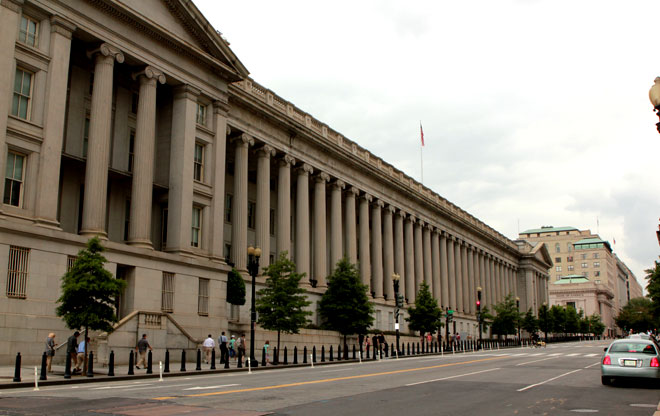
Treasury Building
Congress authorized construction of the Treasury building in 1836. Built wing-by-wing, it took more than 30 years to complete. The most striking features is the 34 Ionic column colonnade. Each 36-foot-tall column is carved out of one piece of stone and weighs 30 tons.
Image: Michael Limburg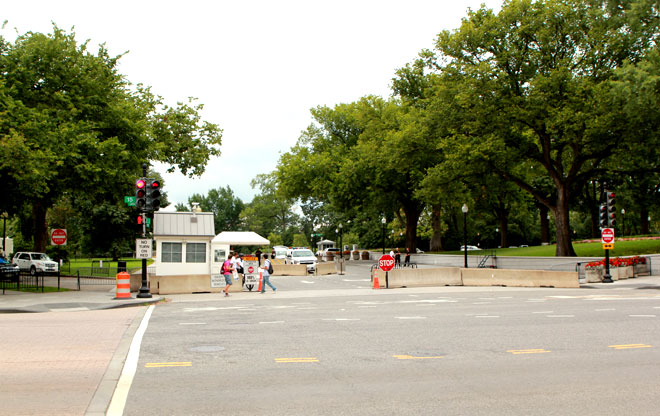
E Street Today
Following the September 11, 2001 terrorist attacks, this stretch of E Street was closed to vehicles to adequately secure the White House grounds. The temporary security elements in this heavily travelled area that leads to the Ellipse and a viewing area to the White House are unsightly and serve as impediments to pedestrians and bicyclists.
Image: Elizabeth Miller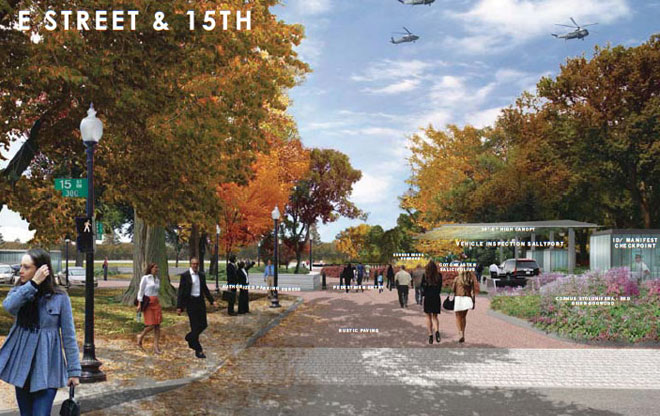
E Street Proposal
The proposed redesign beautifies the security components and improves the visitor experience by subtly raising the grade of the Ellipse and employing a seat wall to define its edge. This provides a new space for public gathering while minimizing the visual appearance of adjacent parking. If security is no longer needed in the future, the design can easily accommodate re-opening of the street.
Image: Rogers Marvel Architects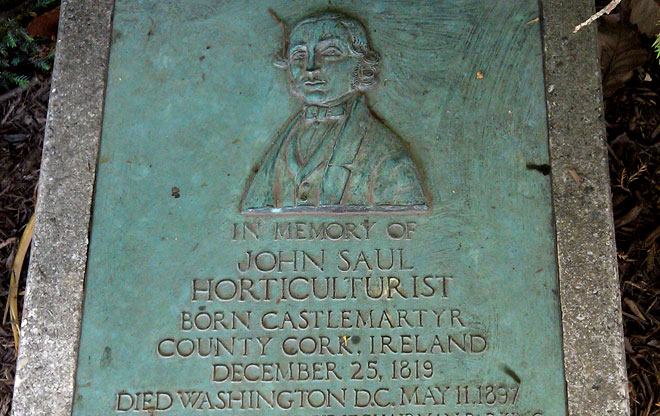
Hidden Gems
While strolling around the eastern grounds, there are hidden gems that offer a glimpse of the area’s history. Horticulturalist John Saul, who supervised improvements to President’s Park in the 19th century, is commemorated in the shrub garden near the Visitor’s Center. Along 15th Street, you'll discover a memorial to the early settlers whose land grants comprised the federal city, the area we now know as the District of Columbia. The stone pillar depicts the name and the agricultural pursuits of these early pioneers.
Image: Elizabeth Miller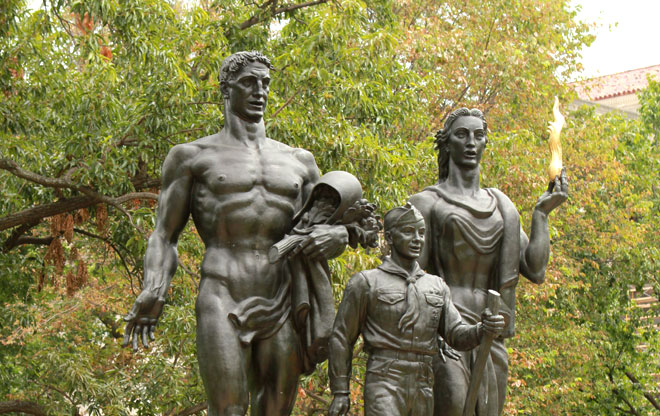
Boy Scout Memorial
This memorial to the Boy Scouts of America sits at the location of the first National Boy Scout jamboree held in 1937. Dedicated in 1964, the memorial was largely funded with change collected by Boy Scouts. The site offers a cool place to rest and rejuvenate and includes interpretative elements explaining the symbolism of each figure and the Boy Scouts motto.
Image: Michael Limburg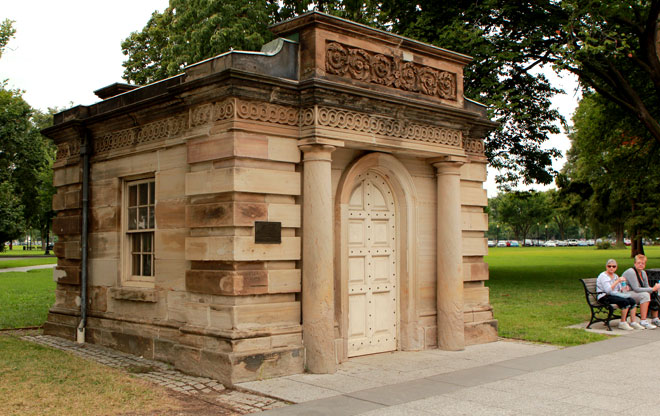
The Gatehouses
This 1828 sandstone gatehouse was built to watch over the U.S. Capitol grounds. In 1889, it was moved and reconstructed in this location, along with its twin on 17th Street. The high-water marks on the southeast side depict several floods the house weathered over the years.
Image: Michael Limburg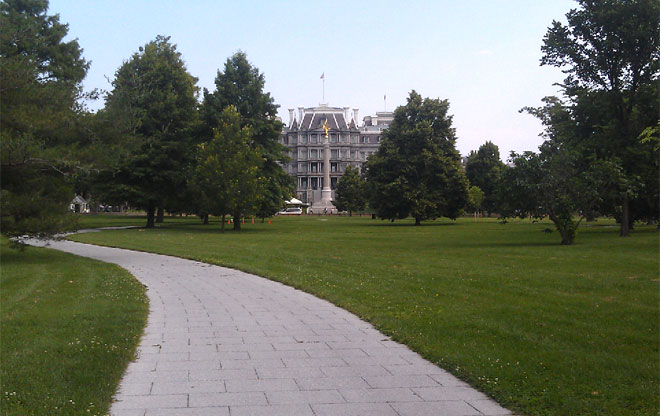
First Division Monument
The curvilinear walks in the Ellipse's western side-yard link the First Division Monument Plaza with Constitution Avenue, creating pastoral views to important places of interest. The First Division Monument sits south of the Eisenhower Executive Office Building, formerly the State, War, and Navy Building, which now houses the President’s staff. The monument honors the valiant efforts of the soldiers who fought in World Wars I and II, the Vietnam War, and Operation Desert Storm.
Image: Elizabeth Miller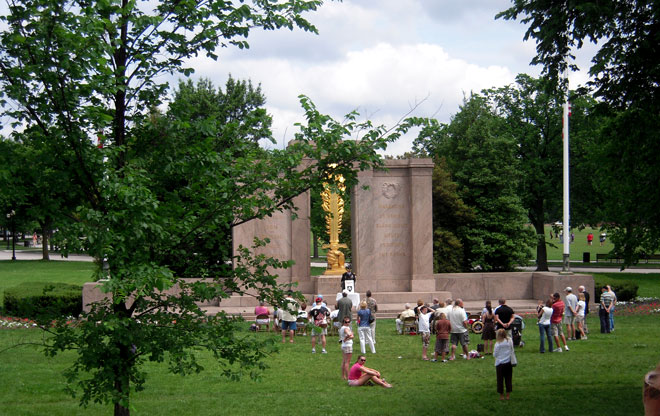
Second Division War Memorial
This memorial honors the 17,660 killed in the U.S. Army’s Second Division during World War I. The memorial elements are symbolic: the Division’s insignia, the profile of an American Indian within a star, is embossed on an 18-foot-tall flaming sword handle which represents blocking the advance of German troops to Paris. Throughout the year, citizens gather to learn about or commemorate the gallant men and women who served our country.
Image: Elizabeth Miller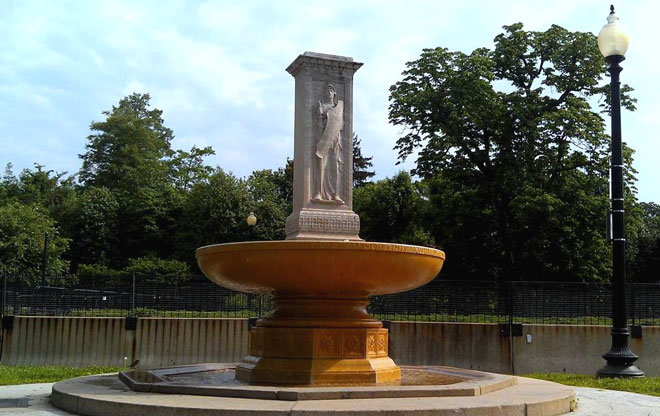
The Titanic Fountain
This fountain was erected by friends to commemorate two prominent Washingtonians who lost their lives on the RMS Titanic in April 1912. Major Archibald Butt was a military aid to President Theodore Roosevelt and President William Taft. Francis Millet was a painter, member of the Fine Arts Commission, and director of the American Academy in Rome, Italy. The fountain was also designed to provide water for horses of the park's mounted police.
Image: Elizabeth Miller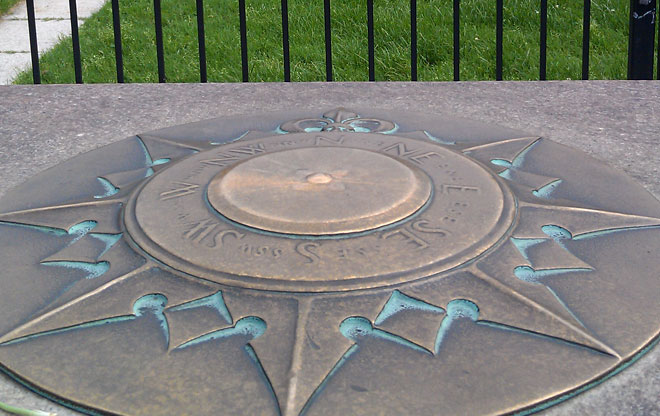
The Zero Marker
From this spot, in 1919, the first transcontinental military motor convoy began their journey to San Francisco. Significant for its time, Congress authorized placement of a marker to represent the official starting point for measurement of highway distances from Washington, D.C. Now, this pink granite pedestal with a bronze compass marks the symbolic north-south meridian of the nation’s capital.
Image: Elizabeth Miller